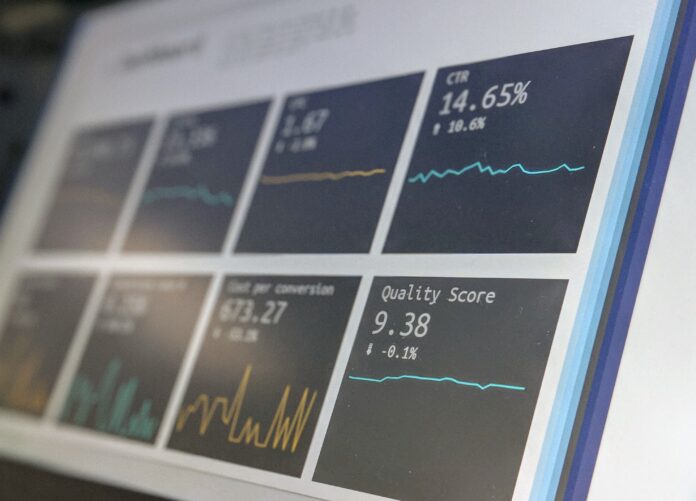The CPI report, which stands for Consumer Price Index report, is a key economic indicator that measures changes in the average prices of goods and services purchased by households over a given period. It is one of the most widely followed reports released by government agencies and is used to gauge inflation and assess the overall health of an economy. In this comprehensive guide, we will delve into the details of the CPI report, its significance, methodology, and provide a list of ten important insights derived from the report.
The CPI report, often considered a vital tool for policymakers, economists, investors, and consumers, provides valuable information about the purchasing power of money and the cost of living. By tracking changes in consumer prices, it helps to determine the rate of inflation and enables comparisons of price levels across different periods and geographical regions.
The U.S. Bureau of Labor Statistics (BLS) is responsible for producing and publishing the CPI report on a monthly basis. The data collected for the report is obtained through extensive surveys and data analysis. The BLS gathers information on the prices of thousands of goods and services from a wide range of businesses, including retail stores, hospitals, and service establishments. The data is meticulously collected and weighted to reflect the relative importance of different goods and services in a typical consumer’s basket of expenditures.
Now, let’s move on to the ten important things you need to know about the CPI report:
1. Definition: The Consumer Price Index (CPI) measures the average change in prices paid by urban consumers for a fixed basket of goods and services over time. It is calculated by comparing the current prices to a reference base period, which is assigned a value of 100.
2. Basket of Goods and Services: The CPI report tracks a broad range of goods and services that are representative of the average consumer’s expenditures. These items include food, housing, transportation, medical care, education, and recreation, among others.
3. Inflation Measurement: The CPI report serves as a fundamental tool for measuring inflation. It tracks the price movements of goods and services and calculates the percentage change over time. Rising CPI values indicate inflation, while falling values suggest deflation.
4. Weighting Methodology: The BLS assigns different weights to various categories of goods and services based on their relative importance in the average consumer’s budget. This ensures that the CPI reflects the spending patterns of households accurately.
5. Core CPI: The CPI report also includes a measure called Core CPI, which excludes the volatile food and energy prices. Core CPI is often used to gauge underlying inflation trends, as food and energy prices can be subject to significant short-term fluctuations.
6. Regional CPI: The BLS publishes CPI data for different geographical regions within the United States. This breakdown allows for comparisons of price changes across various cities and states, providing valuable insights for policymakers and businesses.
7. Market Impact: The CPI report has a significant impact on financial markets, including stocks, bonds, and currency markets. Investors closely monitor CPI releases to assess the potential impact on interest rates, corporate earnings, and overall market sentiment.
8. Wage Adjustments: The CPI report plays a crucial role in determining wage adjustments for workers. Many labor contracts and government programs are tied to CPI changes, ensuring that wages keep pace with inflation.
9. Inflation Expectations: The CPI report influences inflation expectations among businesses, consumers, and policymakers. If inflationary pressures are perceived to be rising, it can lead to changes in spending patterns, investment decisions, and monetary policy adjustments.
10. Policy Implications: Central banks, such as the U.S. Federal Reserve, closely monitor the CPI report to make informed decisions about monetary policy. If inflation deviates significantly from the target level, central banks may adjust interest rates or employ other policy tools to stabilize
CPI Report: The Consumer Price Index (CPI) is a vital economic indicator used to measure changes in the average prices of goods and services purchased by households over a specified period. The CPI report provides essential insights into inflation trends, the cost of living, and the purchasing power of money. It is widely followed by economists, policymakers, investors, and consumers as it offers valuable information about price movements and economic stability. In this comprehensive analysis, we will delve into the intricacies of the CPI report, including its methodology, significance, factors affecting its calculation, and its impact on various stakeholders.
CPI Report: The CPI report is produced and published by the U.S. Bureau of Labor Statistics (BLS) on a monthly basis. It serves as a fundamental tool for understanding inflation, which is a critical component of macroeconomic analysis. The CPI measures the average change in prices paid by urban consumers for a fixed basket of goods and services over time. By tracking these price changes, the report enables comparisons of price levels between different periods and regions, facilitating assessments of inflation rates.
The BLS collects extensive data to compile the CPI report. It conducts surveys and gathers information on the prices of thousands of goods and services from a wide range of businesses. Retail stores, hospitals, service establishments, and other relevant entities provide data on the prices of goods and services they offer. The collected data is then carefully analyzed, weighted, and processed to ensure accuracy and reflect the relative importance of different categories in a typical consumer’s expenditure.
To understand the CPI report in more depth, it is important to explore its methodology. The BLS calculates the CPI by comparing the current prices of goods and services with their prices during a reference base period. The reference base period is assigned a value of 100, serving as the benchmark against which price changes are measured. The difference between the current price and the base period price is expressed as a percentage, indicating the inflation or deflation in prices over time.
The basket of goods and services included in the CPI report is another crucial aspect to consider. The BLS selects a representative set of items that capture the average consumer’s expenditures. These items encompass various categories such as food, housing, transportation, medical care, education, and recreation. The selection of goods and services is based on extensive consumer expenditure surveys that gather detailed information about household spending habits.
In determining the relative importance of different items within the CPI basket, the BLS employs a weighting methodology. This methodology ensures that the CPI accurately reflects the spending patterns of the average consumer. For example, if housing expenses constitute a significant portion of the average consumer’s budget, housing-related items will be assigned a higher weight in the calculation of the CPI. The weights are periodically updated to account for changes in consumer preferences and spending habits.
It is important to note that the CPI report includes two notable measures: the headline CPI and the core CPI. The headline CPI encompasses all items in the basket, providing a comprehensive view of price movements across various sectors. On the other hand, the core CPI excludes the volatile prices of food and energy. The core CPI is often considered a more reliable indicator of underlying inflation trends, as food and energy prices can experience substantial short-term fluctuations due to factors such as weather conditions and geopolitical events.
The CPI report offers regional data that allows for comparisons of price changes across different cities and states within the United States. This regional breakdown provides valuable insights for policymakers, businesses, and consumers in understanding how price levels and inflationary pressures vary geographically. It helps identify areas where prices may be rising more rapidly or where inflationary pressures are subdued, enabling more targeted policy interventions and economic decision-making.
The CPI report holds significant implications for various stakeholders in the economy. First and foremost, it impacts individuals and households. By tracking changes in consumer prices, the CPI report helps individuals understand the impact of inflation on their purchasing power and cost of living. It allows them to assess whether their income levels are keeping up with rising prices, thereby influencing their spending patterns, saving habits, and financial planning.
Furthermore, the CPI report plays a crucial role in wage adjustments. Many labor contracts, both in the public and private sectors, include provisions that tie wage increases to changes in the CPI. This ensures that workers’ wages are adjusted to compensate for inflation, helping them maintain their standard of living. Additionally, government programs such as social security benefits, pension plans, and welfare payments may also utilize the CPI as a factor in determining cost-of-living adjustments.
The CPI report is closely monitored by policymakers and central banks. Central banks, such as the U.S. Federal Reserve, utilize the CPI report to assess the state of inflation and make informed decisions about monetary policy. If inflation deviates significantly from the desired target level, central banks may adjust interest rates or employ other policy tools to manage inflationary pressures. The CPI report provides critical information for central banks to gauge the effectiveness of their monetary policies and adjust them accordingly.
For businesses, the CPI report is a valuable source of information for pricing decisions and forecasting. It provides insights into overall price trends, allowing businesses to anticipate changes in costs and adjust their pricing strategies accordingly. Additionally, the CPI report can influence consumer behavior and demand patterns. If consumers perceive that prices are rising rapidly, they may alter their spending habits, leading businesses to adjust their marketing strategies and product offerings.
Investors pay close attention to the CPI report as well, as it has implications for financial markets. The report’s release can impact stock prices, bond yields, and currency exchange rates. Investors analyze CPI data to assess the potential impact on interest rates, inflation expectations, corporate earnings, and overall market sentiment. For example, higher-than-expected inflation may lead to expectations of tighter monetary policy, which could result in increased bond yields and downward pressure on stock prices.
The CPI report also influences inflation expectations among businesses, consumers, and policymakers. If inflationary pressures are perceived to be rising, it can lead to changes in spending patterns, investment decisions, and economic forecasts. High inflation expectations can result in consumers rushing to make purchases before prices increase further, while businesses may invest more cautiously or adjust production levels. Policymakers take into account these expectations when formulating economic policies and measures to maintain price stability.
The CPI report is subject to certain limitations and criticisms. One key concern is the concept of substitution bias. The CPI measures the average change in prices for a fixed basket of goods and services, assuming that consumers do not change their consumption patterns in response to price changes. However, in reality, consumers often substitute goods and services when prices change. For example, if the price of beef increases significantly, consumers may opt for chicken instead. This substitution behavior can result in an understatement of the actual inflation experienced by consumers.
Another criticism is the inclusion of housing costs in the CPI calculation. The BLS uses a concept called owner’s equivalent rent, which estimates the cost of housing for homeowners as if they were renting their homes. Some argue that this measure does not accurately capture the true cost of housing ownership, leading to potential distortions in the CPI. Additionally, regional variations in housing markets and the calculation of rental equivalence can introduce complexities and challenges in accurately reflecting housing costs.


















